
When Nothing burst onto the scene in 2021 with the ear (1), its mission was a lofty one: make tech fun again. Two years, three products, and 1.5 million sales later, it has managed to carve out a niche for itself on the back of unique designs and savvy marketing. While the ear (1) and phone (1) felt unfinished at launch, Nothing got its act together at the end of last year with the introduction of the Ear (stick).
The brand is kicking things off in 2023 with the debut of the Ear (2). It's often difficult to launch a follow-up product as it has to live up to increased expectations from existing users, but Nothing says it has learned a lot over the last two years, and poured that knowledge into making the Ear (2).
I used the Ear (2) for the better part of a week, and if there's one word to sum up the earbuds, it would be refinement. Nothing didn't change the design, instead turning its attention to audio tuning and connectivity. As a result, the Ear (2) sound much better, and they offer custom sound profiles based on your hearing ability. The case is smaller this time around as well, making it that much more manageable.
So can this second act stand on its own merits, or is it just a facsimile of the ear (1)? Let's find out.
Nothing Ear (2): Pricing and availability
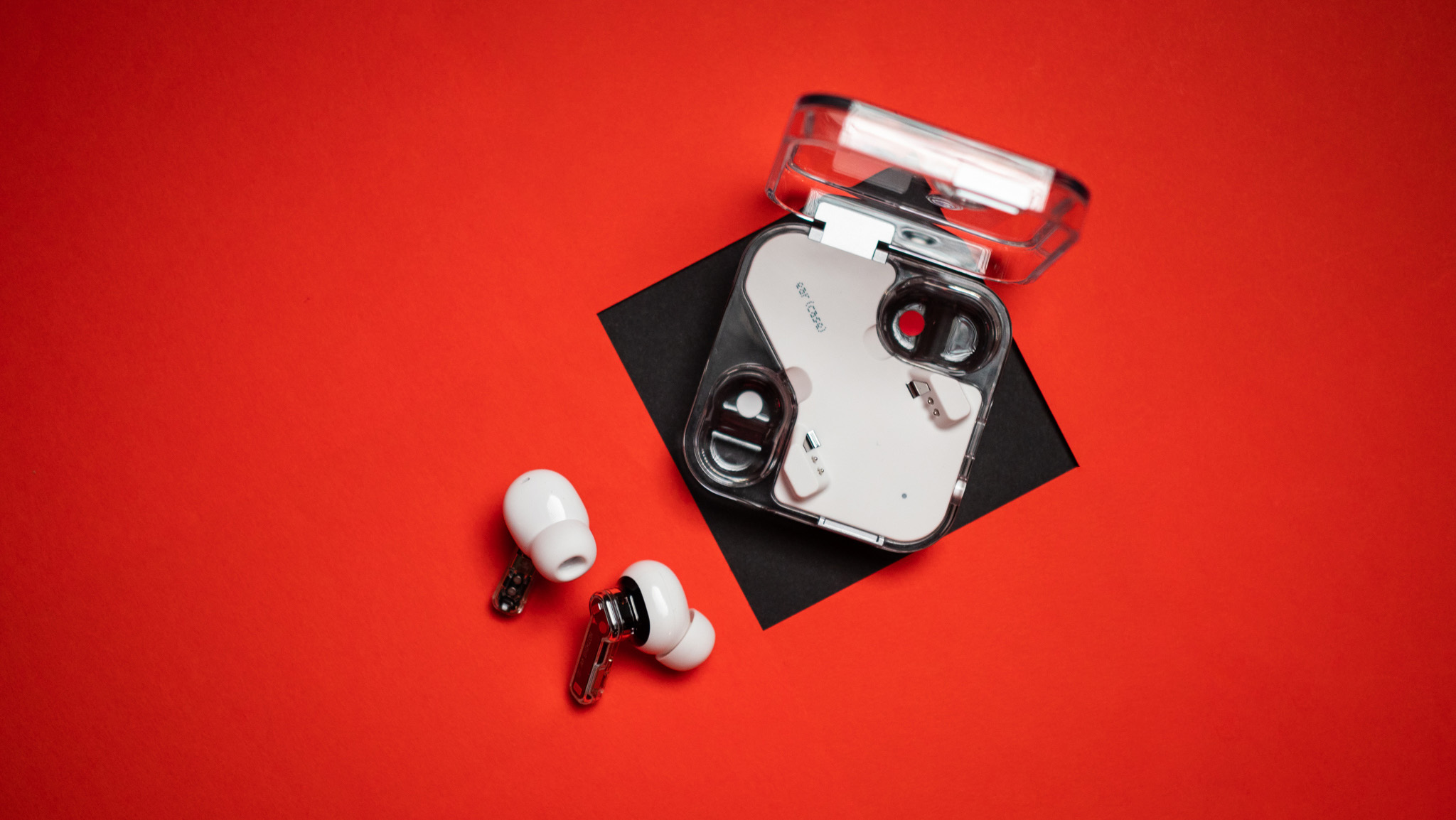
Nothing unveiled the Ear (2) on March 22, and the wireless earbuds are going up for sale starting March 28. The Ear (2) retail for $149 in the U.S. and £129 ($158) in the U.K., and they're available direct from Nothing's website. Buyers in the U.K. will be able to pick up the wireless earbuds from Nothing's retail store in London as well.
India is the biggest market for Nothing, and the brand is being aggressive in the country, with the Ear (2) debuting at ₹9,999 ($120). While that's less than what the Ear (2) costs in other markets, Nothing has the unenviable task of convincing customers in the region to shell out 40% more money than the ear (1). With a lot of strong contenders in this category, that may prove to be a tough ask.
Nothing Ear (2): Design and fit
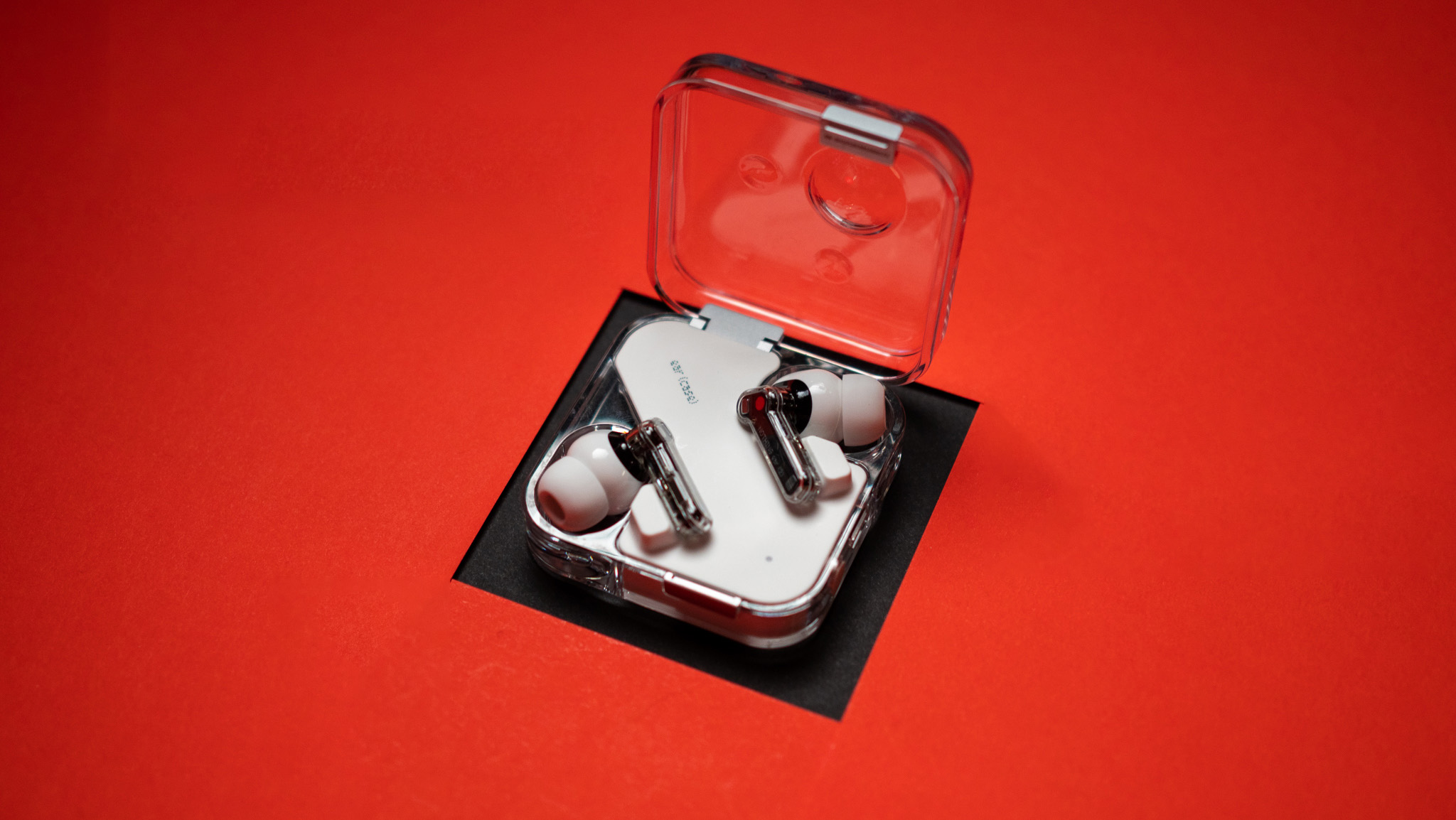
Nothing's quirky design language allowed the brand to garner a lot of initial momentum, and it's relying on that in 2023. The Ear (2) share the same design as their predecessor, and while there are minute changes, the earbuds don't look any different to the ear (1) at a first glance.
That means you're getting the same see-through design for the stalk, giving you a look at the innards. You'll find the Nothing Ear (2) label running across the length of each stalk, and the design for the shell is unchanged as well — it's finished in plastic, with a black accent where the stalk meets the shell. The sound nozzle is angled, and as the shell itself sits above the inner ear, the Ear (2) is very comfortable to wear for an extended duration.
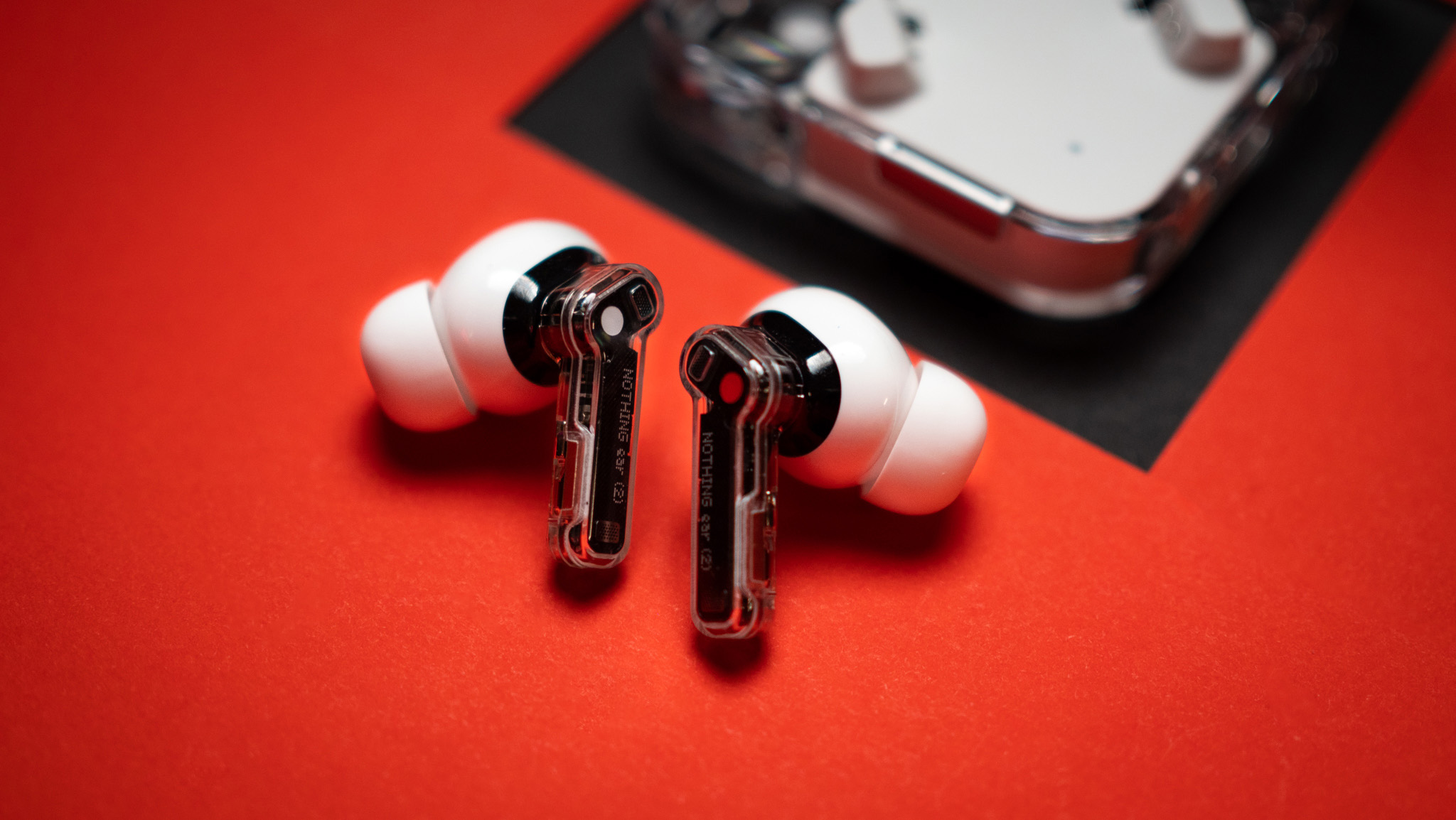

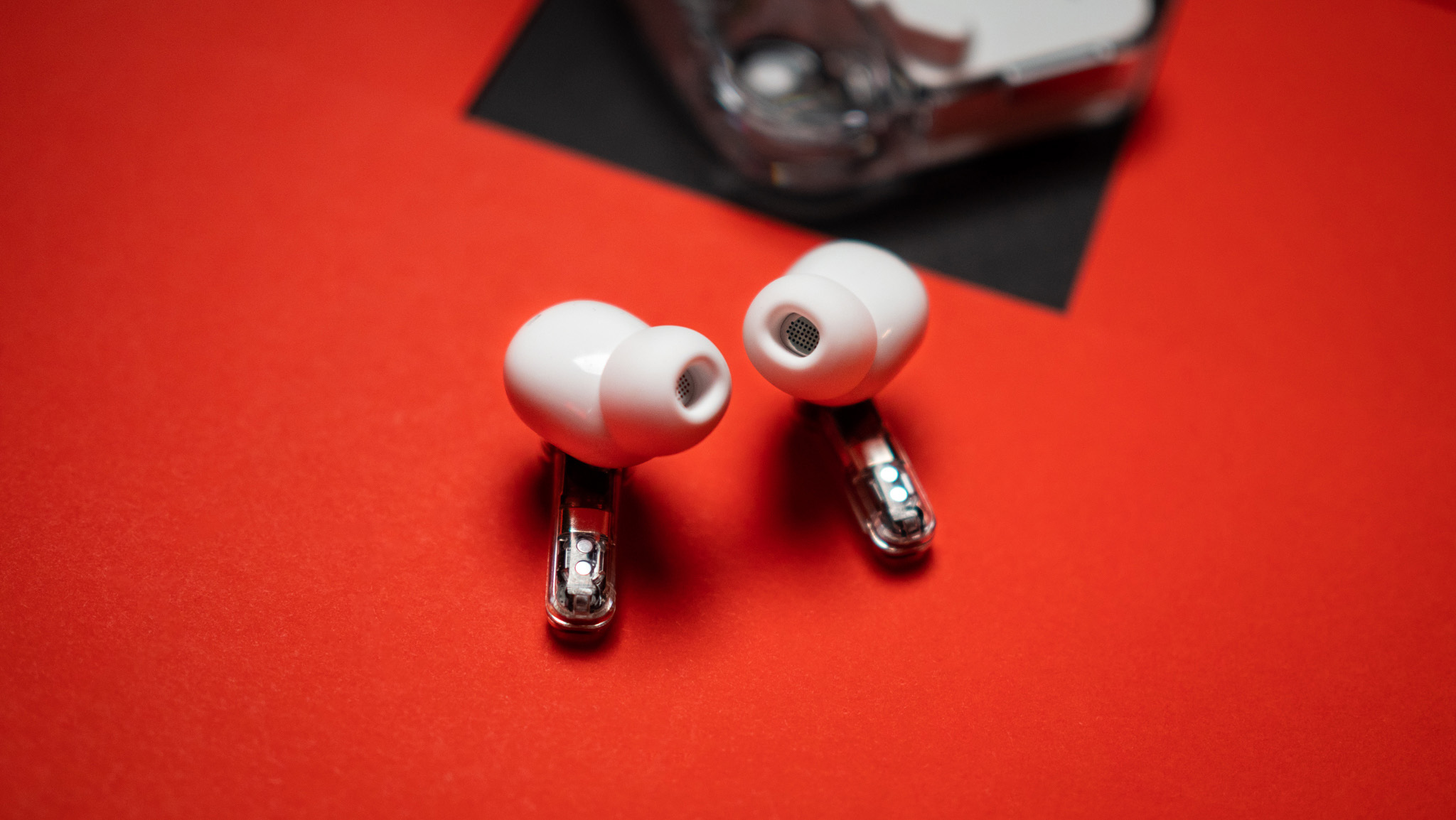
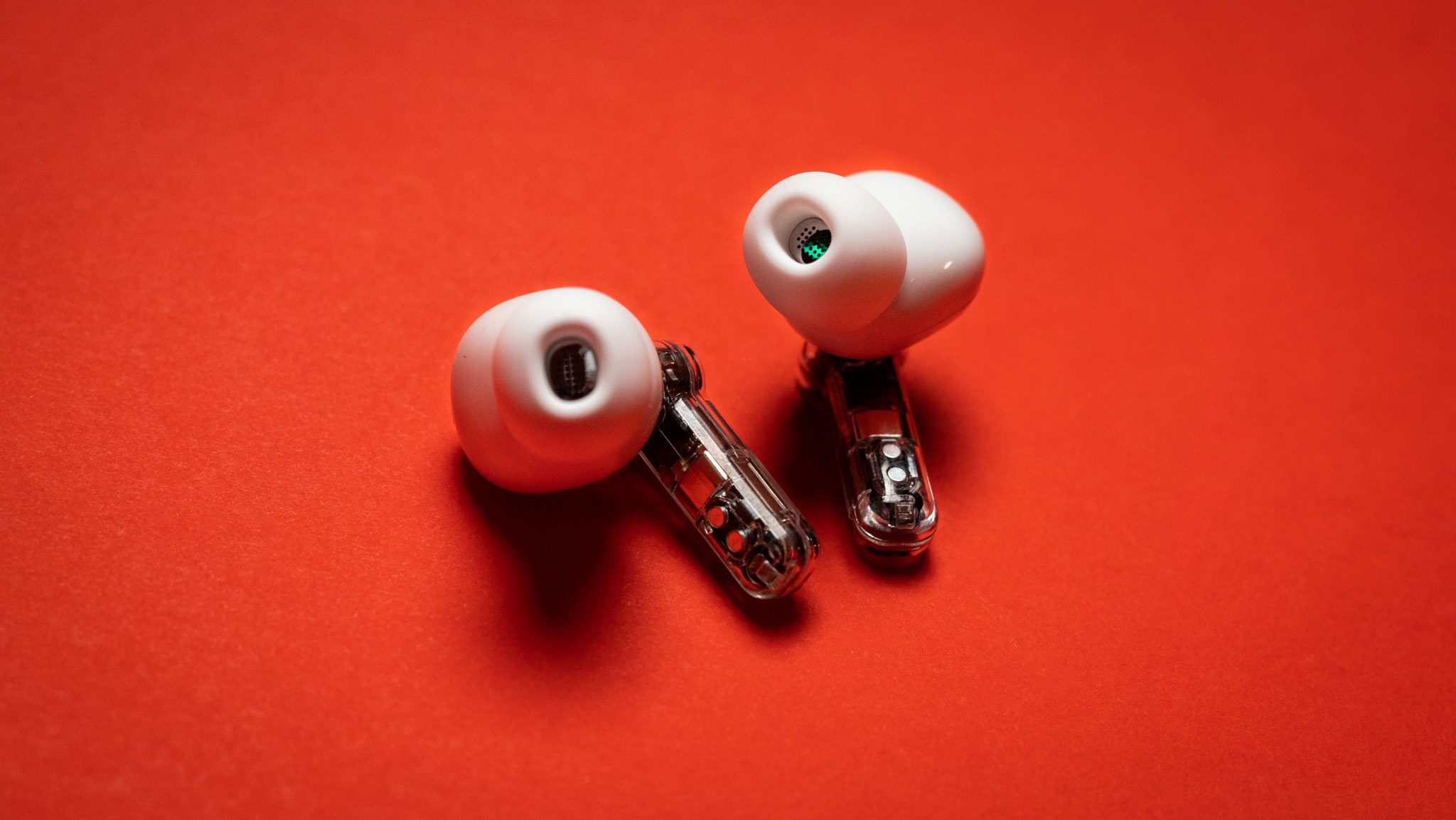
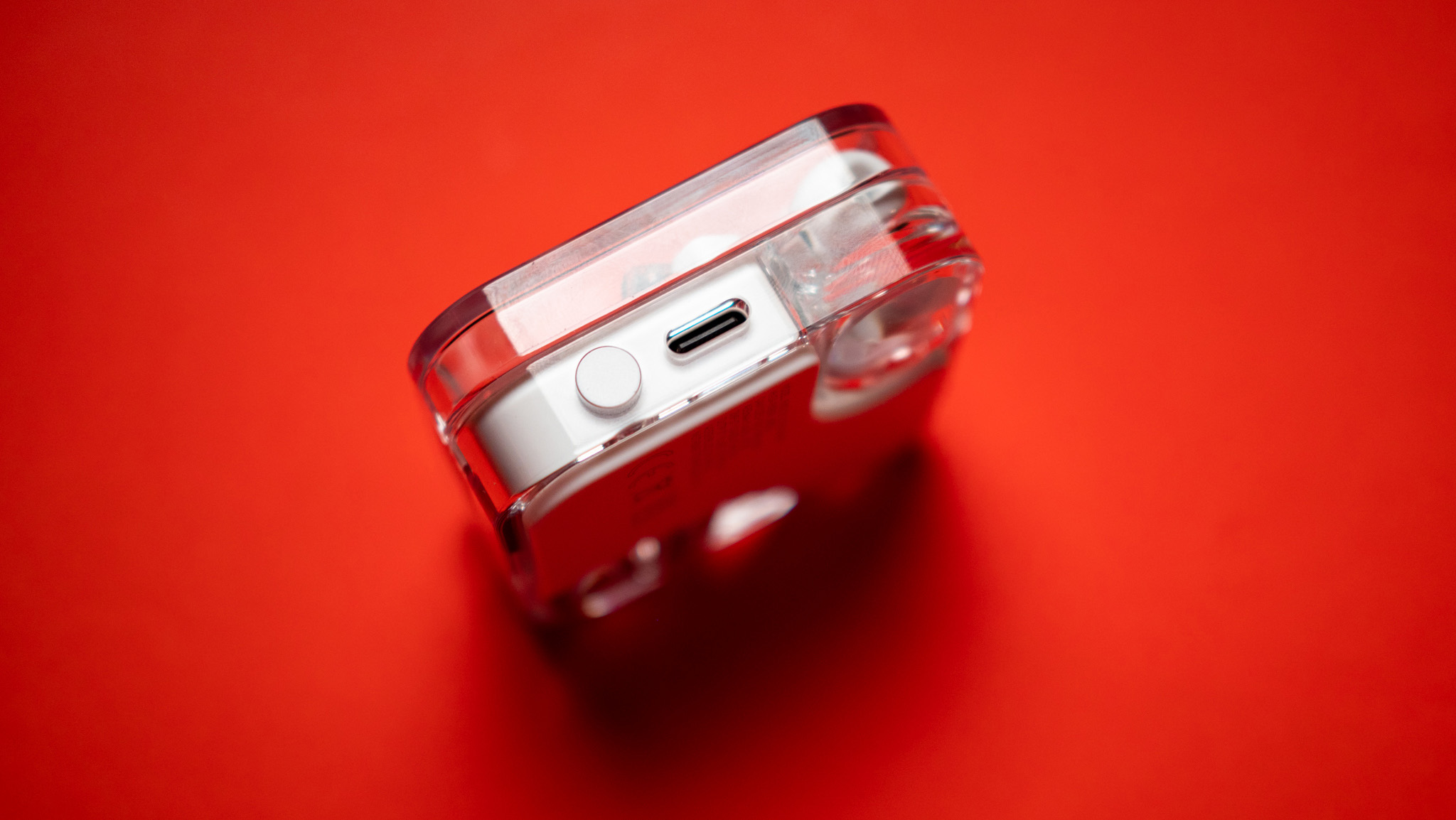
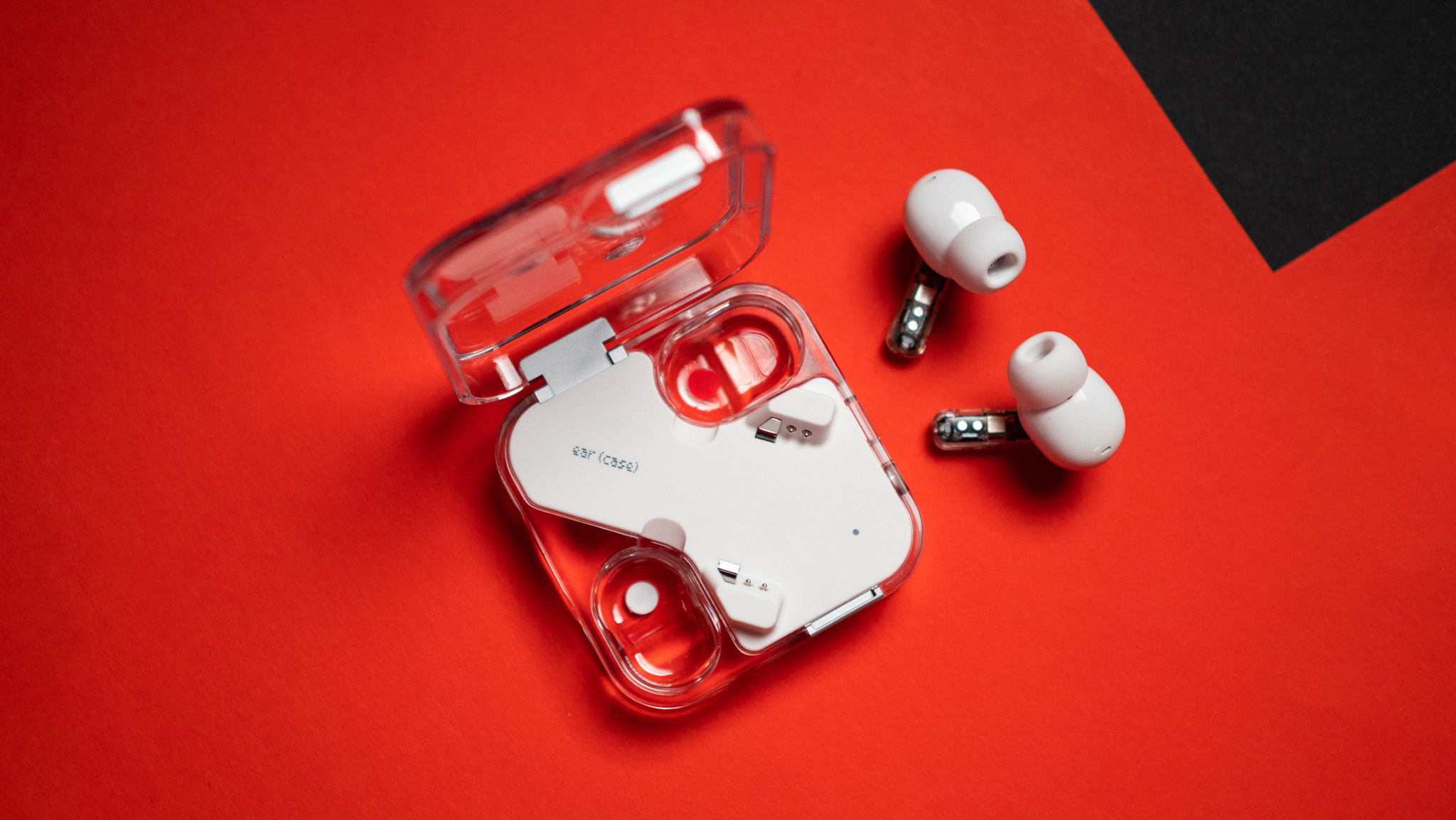
Coming in at 4.5g for each earbud, the Ear (2) are marginally lighter than the 4.7g ear (1) while still offering a slightly larger 33mAh battery (ear (1) had 31mAh). But what I like more is the fact that the case is much more compact; it's narrower and thinner, and thanks to a 485mAh battery, it weighs just 51.9g.
The case is easily pocketable and the thinner design means it isn't as unwieldy as the case on the ear (1) , and the fundamentals are unchanged: there's an indent in between the two earbuds to hold them in place, and the pairing button and USB-C charging port are located on the right.
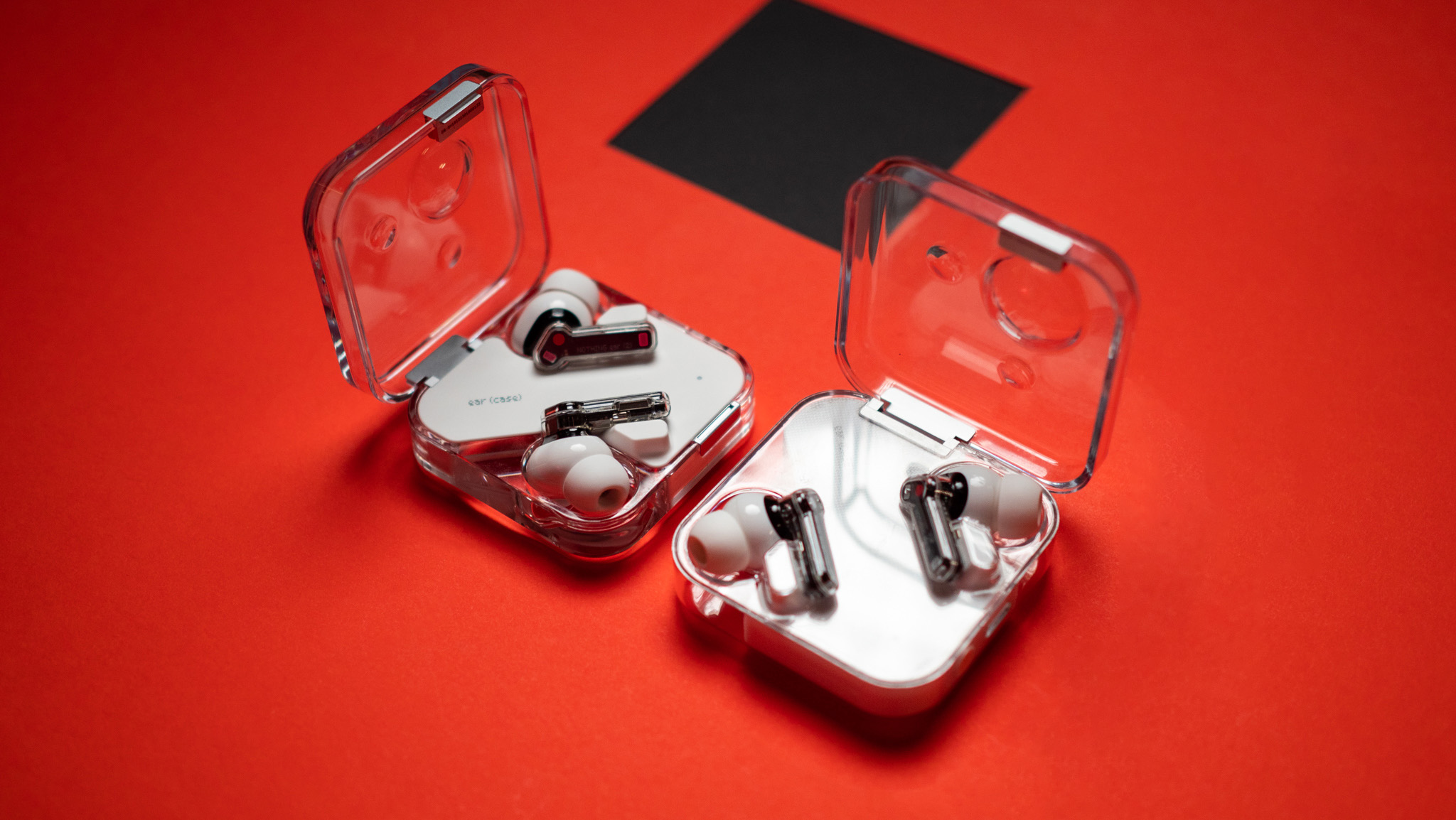
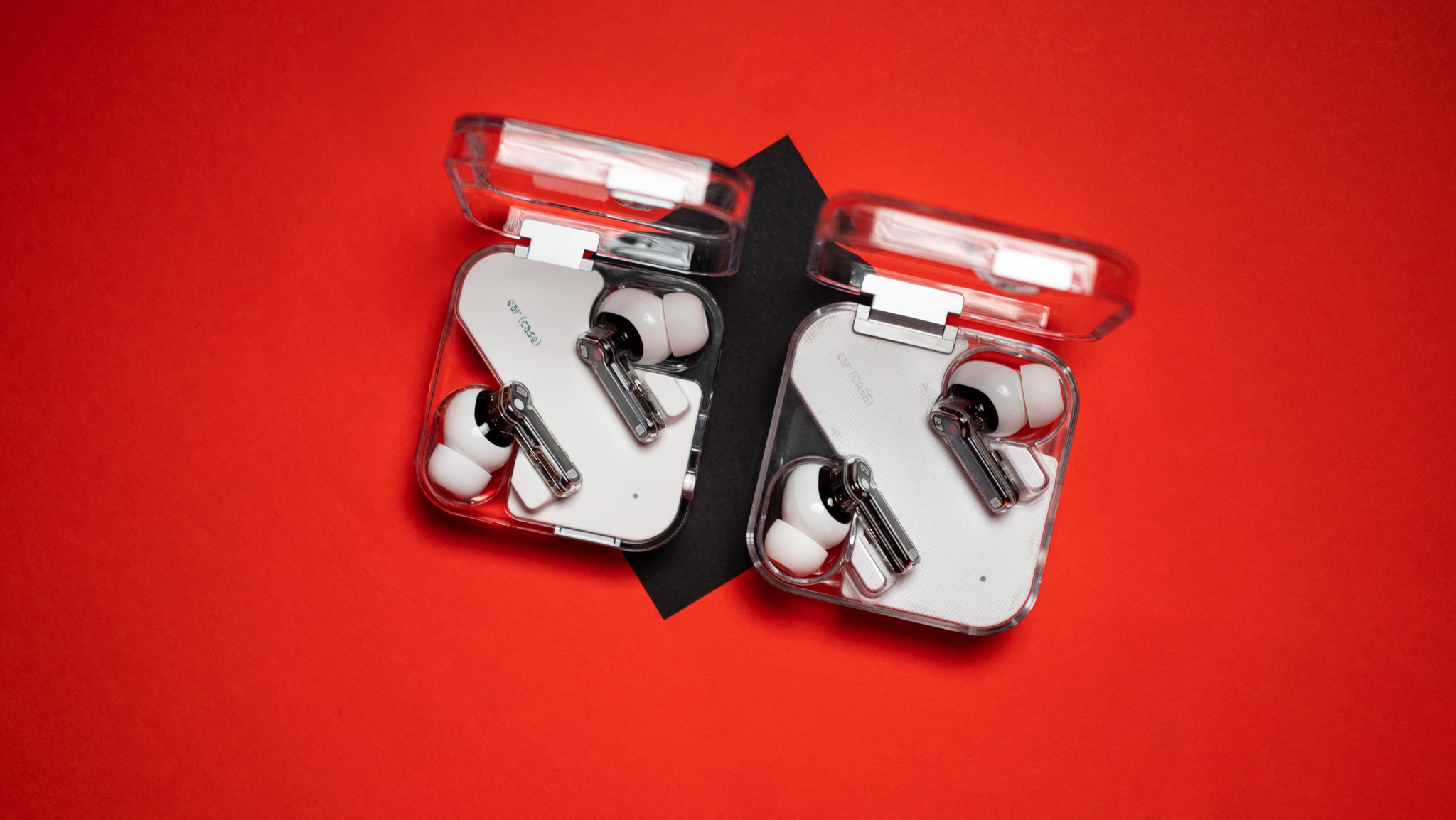
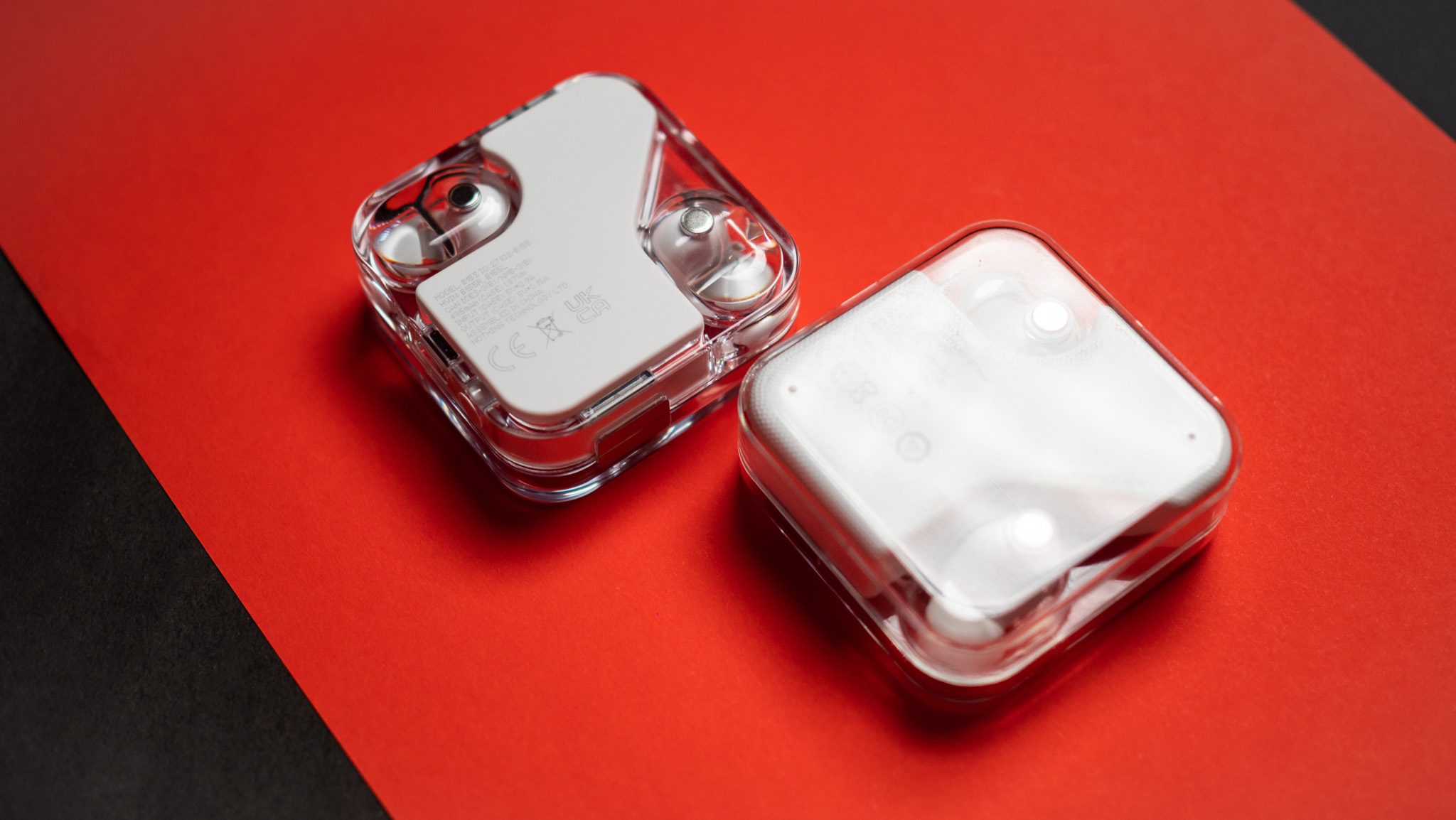
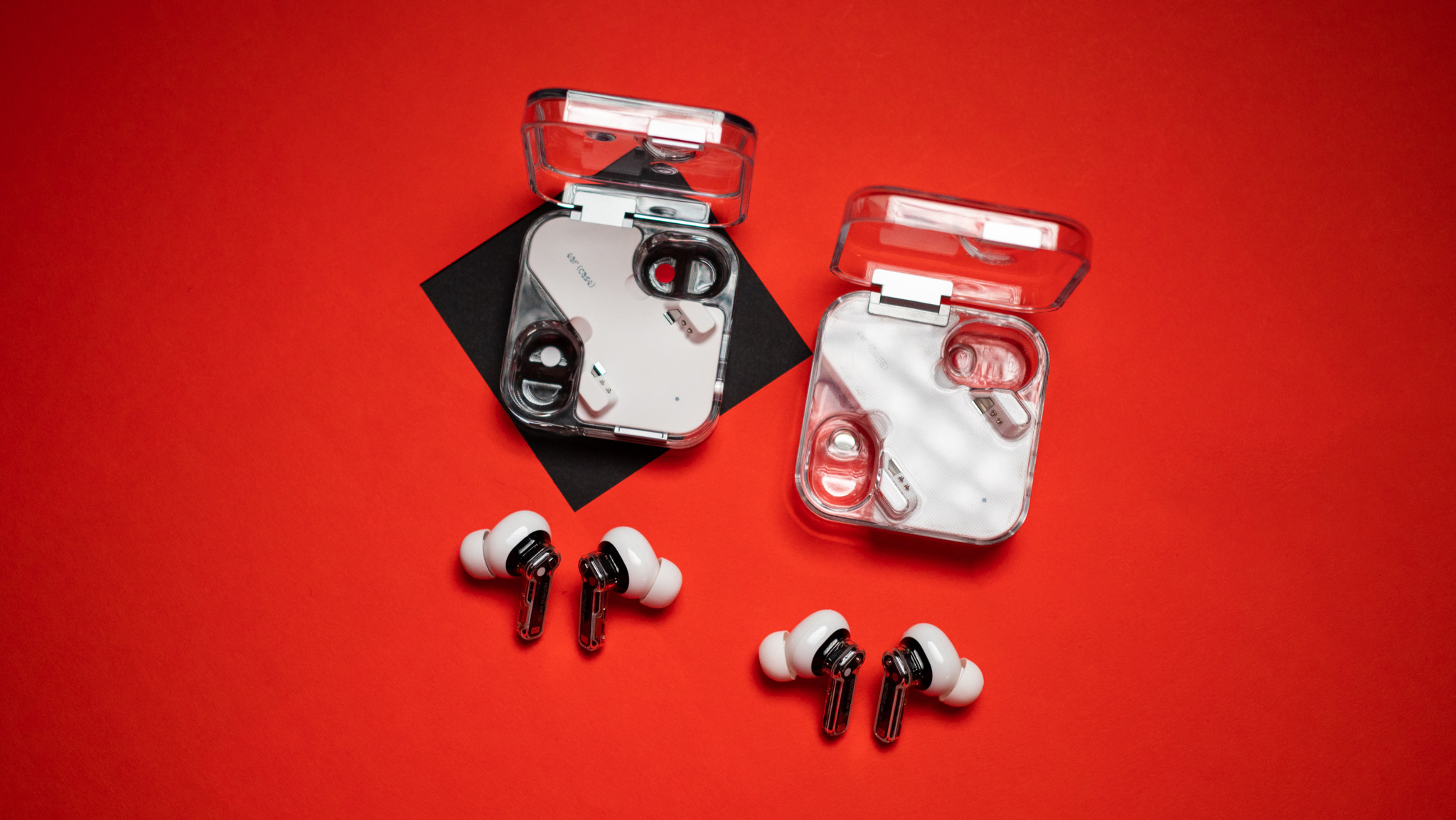
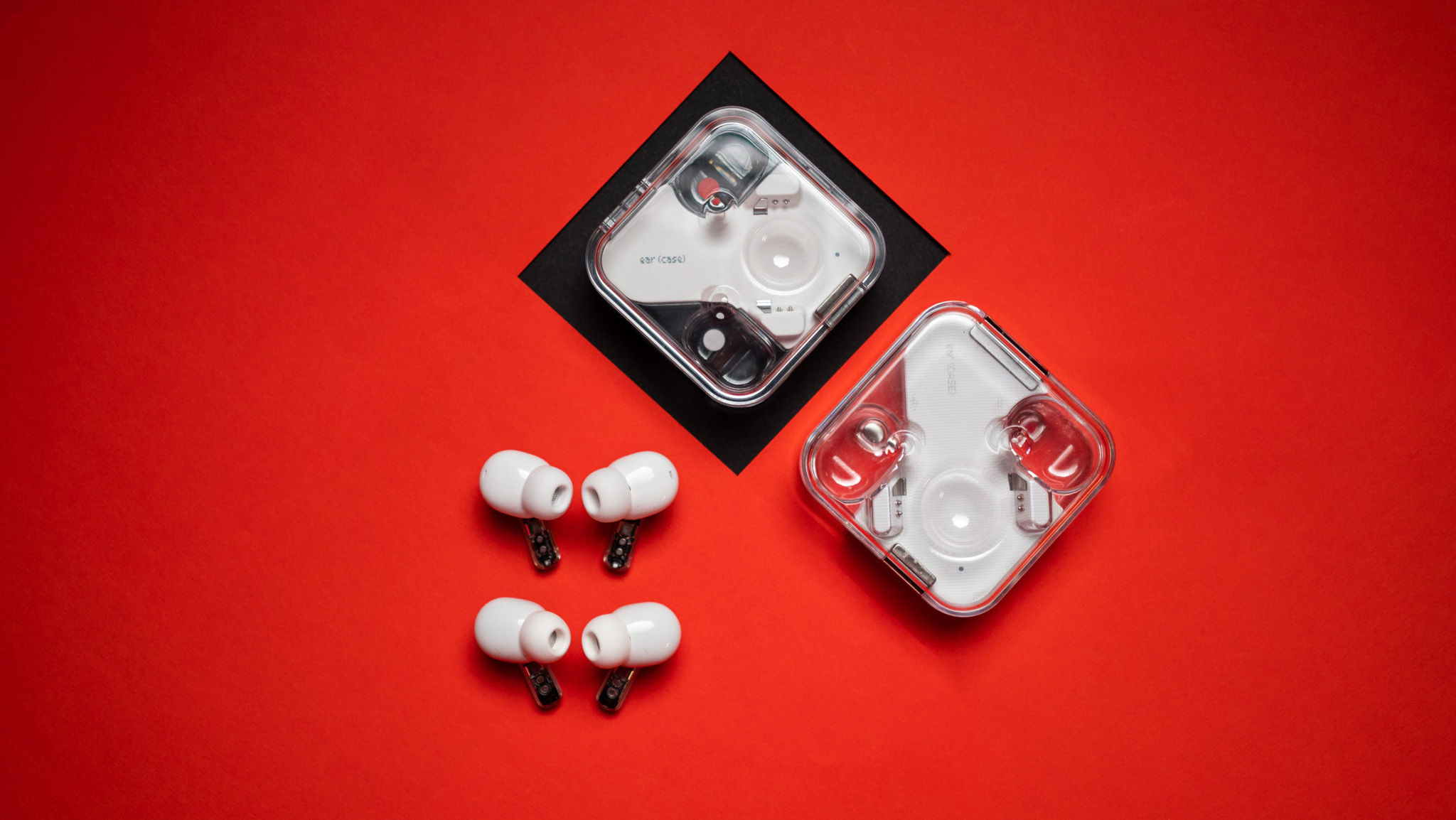
Nothing says it reduced the number of parts in the case, and the main difference is that the battery isn't encased in a glass layer, instead featuring a matte texture to make it easier to hold. While the case still feels like it will pick up scratches if you look at it wrong, at least there's one less surface to worry about. There's IP54 dust and water resistance for the Ear (2), and the case itself has IP55 ingress protection, making the buds a good choice for workouts.
Overall, the Ear (2) don't look very different to their predecessor, but the changes to the case make the earbuds feel a little more polished, and you still get the same great see-through design.
Nothing Ear (2): Features
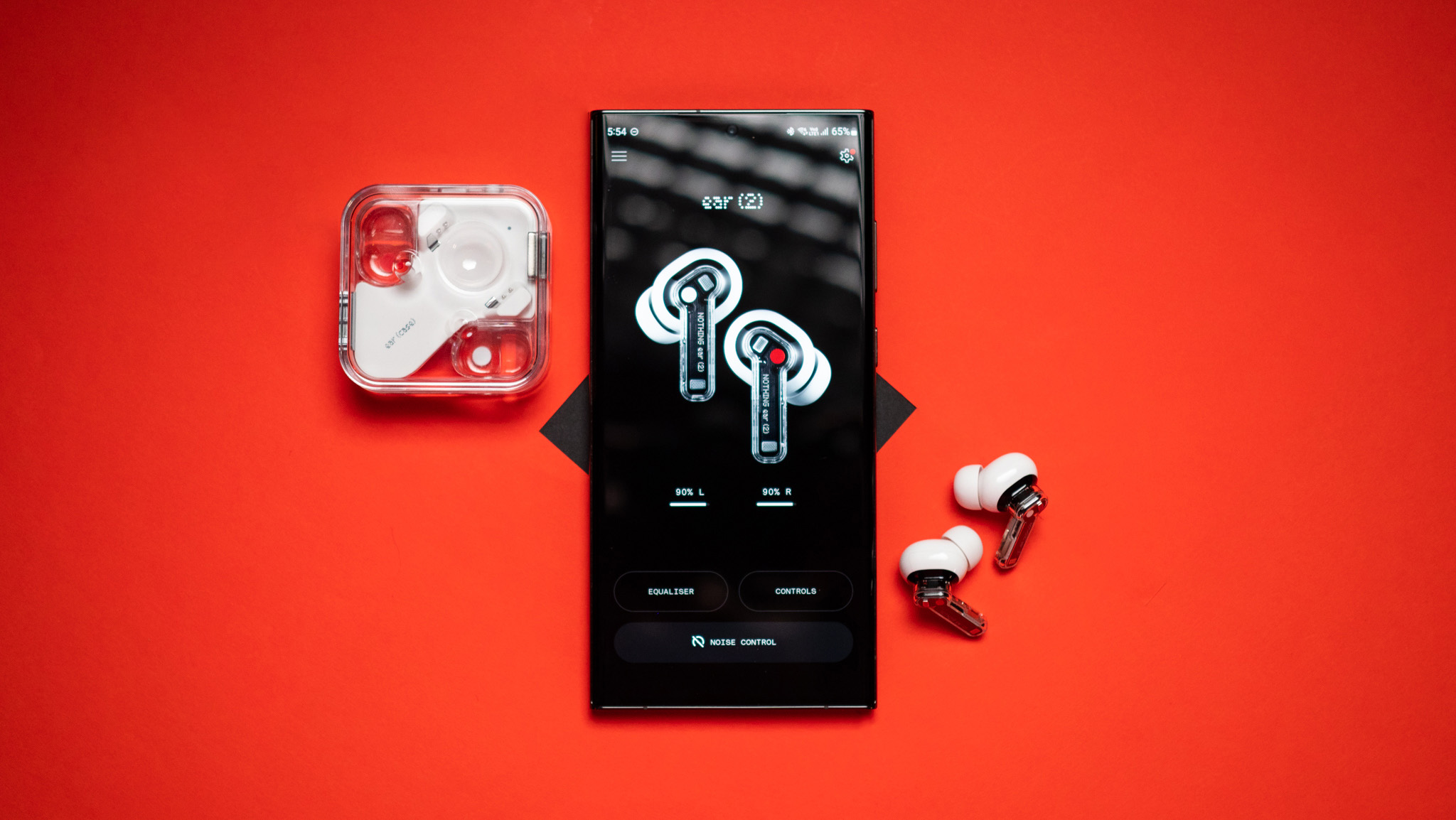
You'll find a lot of tweaks under the hood, with the Ear (2) able to connect to two Bluetooth devices at the same time. This was a big omission on the ear (1), so it's good to see Nothing make amends this time around. Fast pair works just as reliably, and all you need to do is open the case to initiate pairing — I had zero issues pairing the wireless earbuds to the likes of the Galaxy S23 Ultra and other Android phones.
Nothing made changes to its Clear Voice Technology, with the mics positioned to offer better wind noise resistance. Calls went through without any issues whatsoever, and in what has been a particularly windy week here in Hyderabad, the Ear (2) managed to filter wind and other ambient noise admirably.
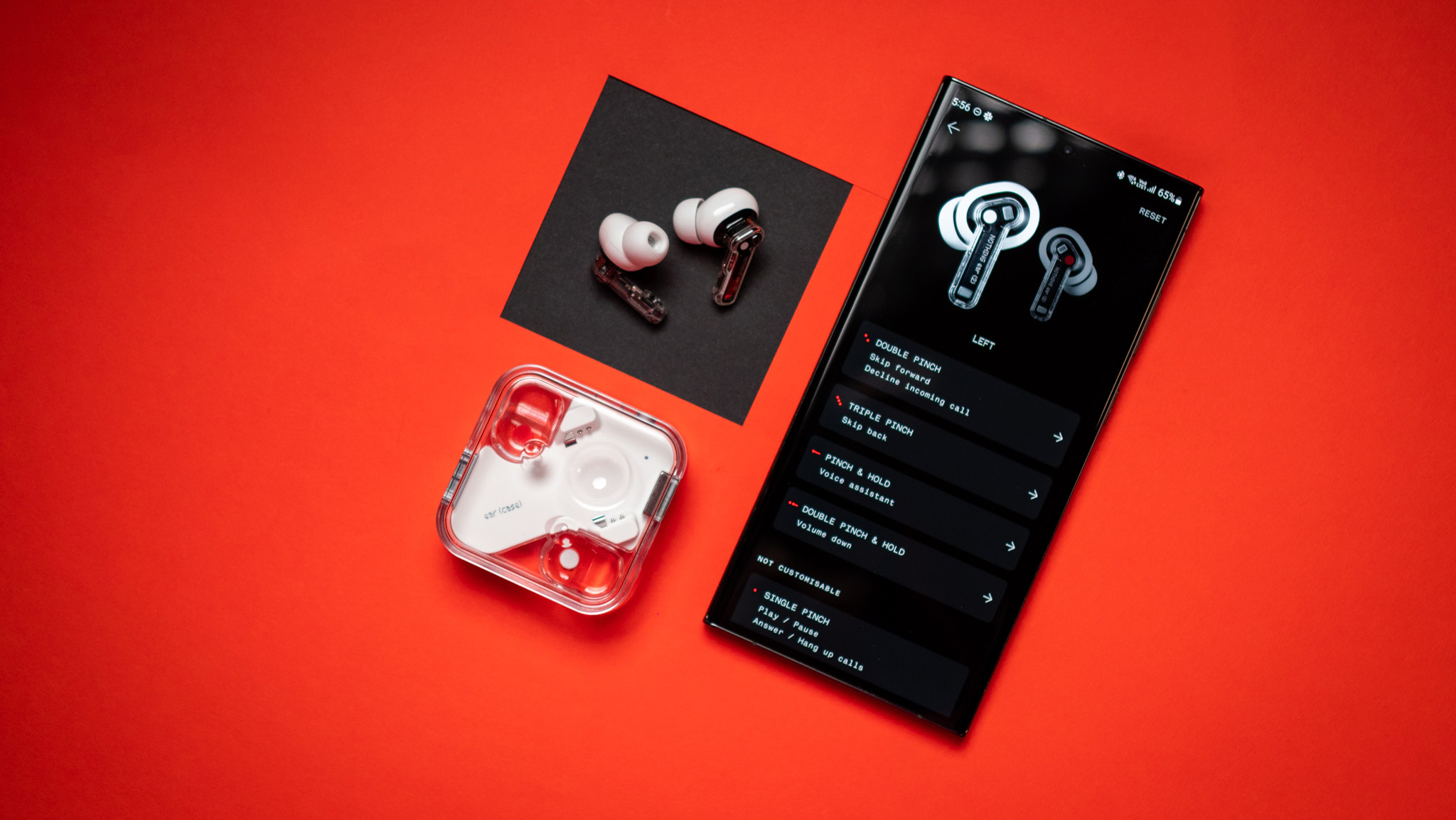
On that note, ANC is back, and it manages to tune out sounds up to 40dB — similar to other earbuds in this category. There are three levels of noise cancellation, and you have the ability to customize noise isolation — there's a mode in Nothing X that determines sound leakage based on the way the Ear (2) fit in your ear canal, adjusting ANC accordingly.
In real-world use, ANC does a brilliant job tuning out ambient sounds like the hum of the AC and any traffic sounds, and the customizability is a welcome addition. There's more on offer in this area, with Nothing rolling out a hearing ID test into Nothing X that lets you change the sound profile of the Ear (2) based on your hearing ability.
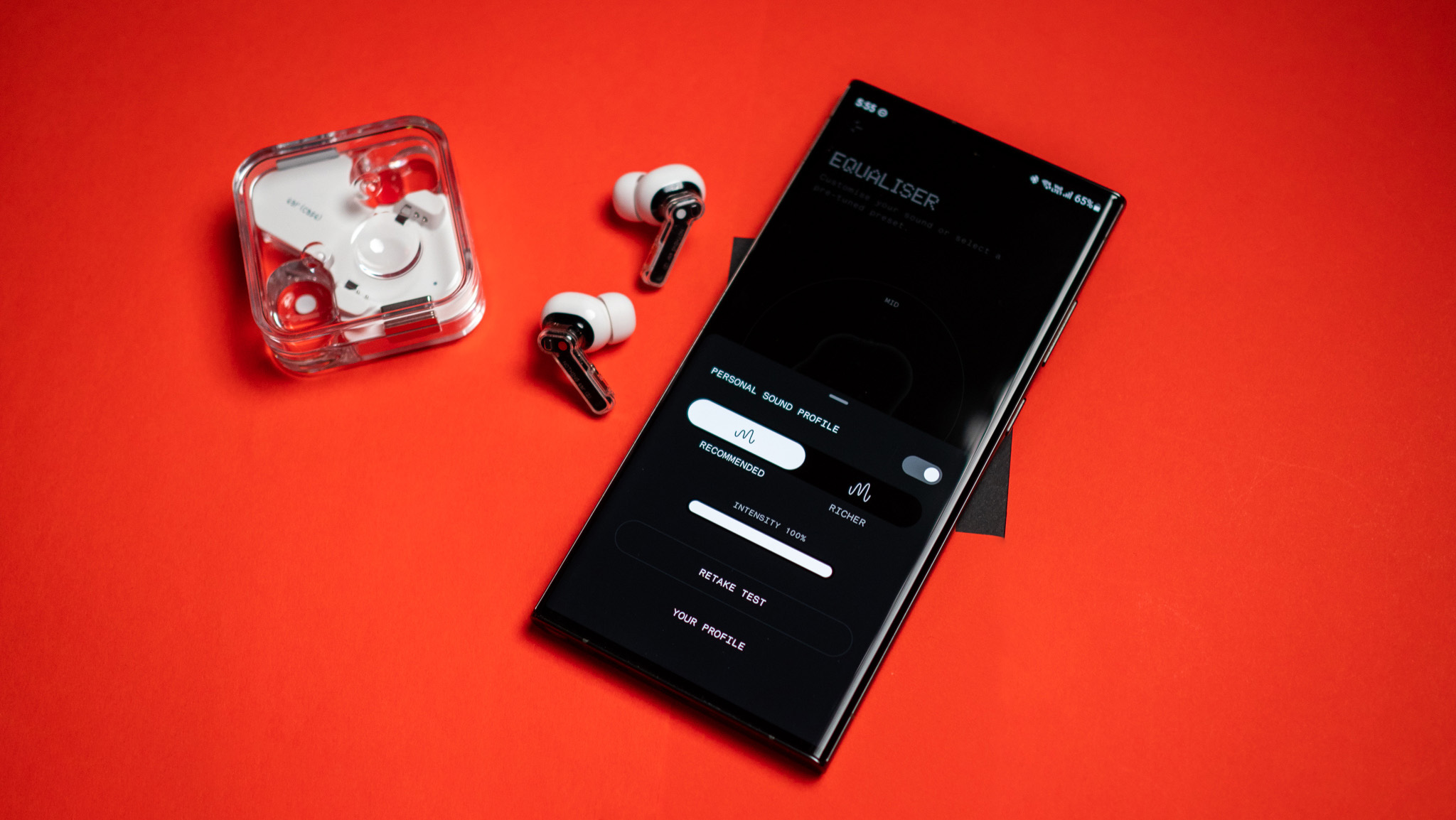
The hearing test is powered by Mimi, and it plays various frequencies; you can then select if they're audible or not, and the sound is tuned based on the frequencies you're able to hear. There are other earbuds that offer a similar feature, and it's good to see Nothing doing the same with the Ear (2).

As for connectivity, the Ear (2) pair over Bluetooth 5.3, and they maintained a rock-solid connection in daily use. Gesture control is pretty straightforward as well, with customizable gestures on both stalks triggered by pressing and holding on the bottom end of the stalk.
Nothing Ear (2): Sound quality
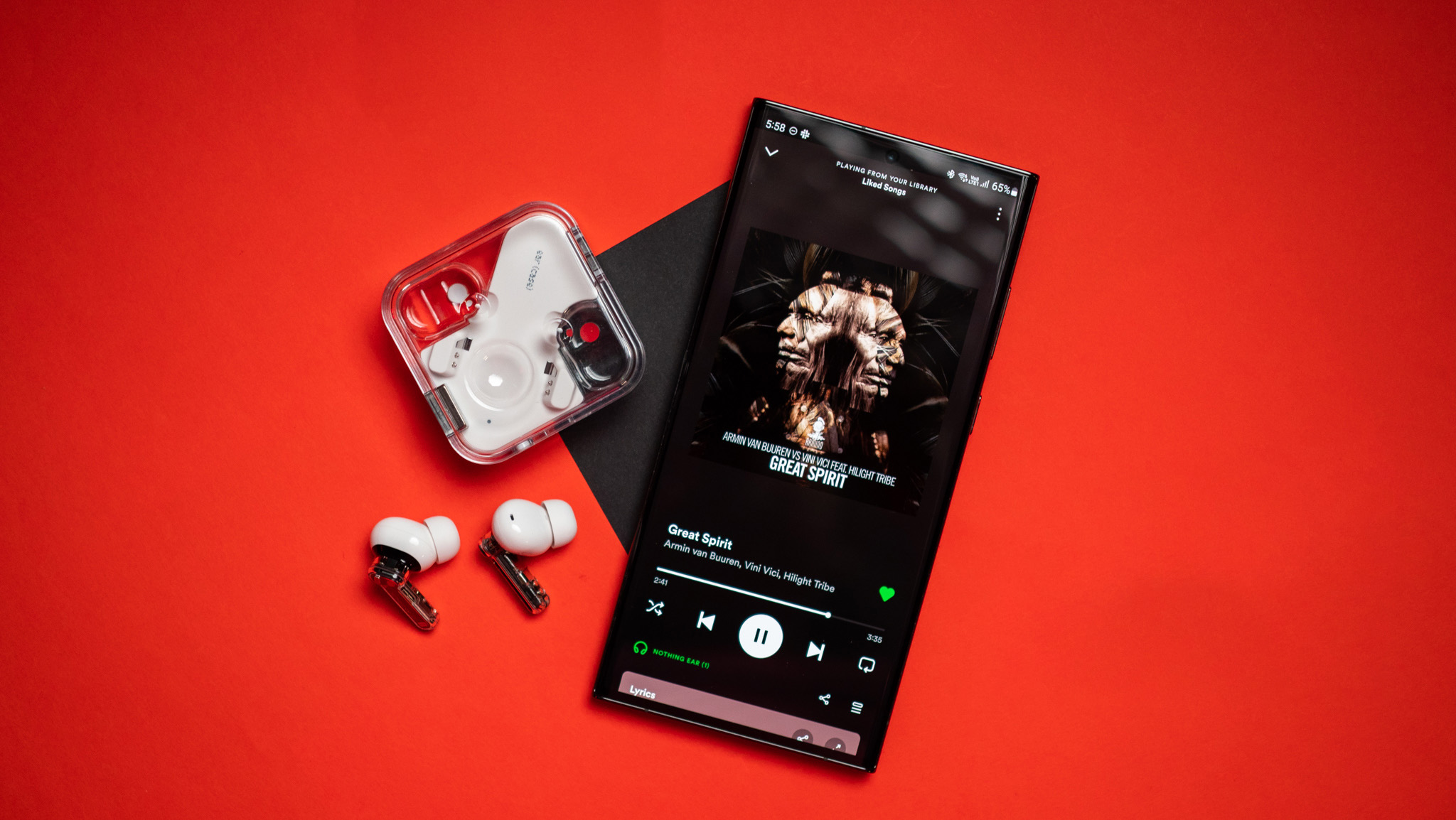
If there's one word to describe the sound of the Ear (2), it would be lively. Nothing says it used a dual chamber design — found in high-end IEMs like the Sennheiser IE600 — to reduce resonance within the shell and deliver better high-end frequencies, and there is a noticeable difference over the ear (1) and even the Ear (stick).
Another thing that's new this year is the introduction of Savitech's LHDC 5.0 codec, with the Ear (2) featuring Hi-Res branding as a result. The codec goes up to 24-bit/192kHz and can transmit up to 1Mbit, and it is a viable alternative to AptX. A decent number of earbuds now offer LHDC — including the likes of the OnePlus Buds Pro 2 and Xiaomi's TWS portfolio — as the codec has been baked into Android starting with Android 10, but as is usually the case with these things, it's not available on all devices.
Nothing added the codec to the phone (1) via a software update last year, and while you'll find LHDC on a few OnePlus, OPPO, and Xiaomi phones, it isn't available on Samsung devices. Even though a codec is available for use on Android, the onus is on the manufacturer to implement it on its devices, and Samsung hasn't done so yet; my Galaxy S23 Ultra has SBC, AAC, AptX, LDAC, and Samsung's own SSC codec, but no LHDC.
So even though the Ear (2) has LHDC, you'll need to make sure that the phone in question has the codec to be able to stream high-res music. The Ear (2) also has SBC and AAC if you're using an iPhone, and with Nothing stating that half of its users are on iOS, a bulk of the streaming is done over AAC.
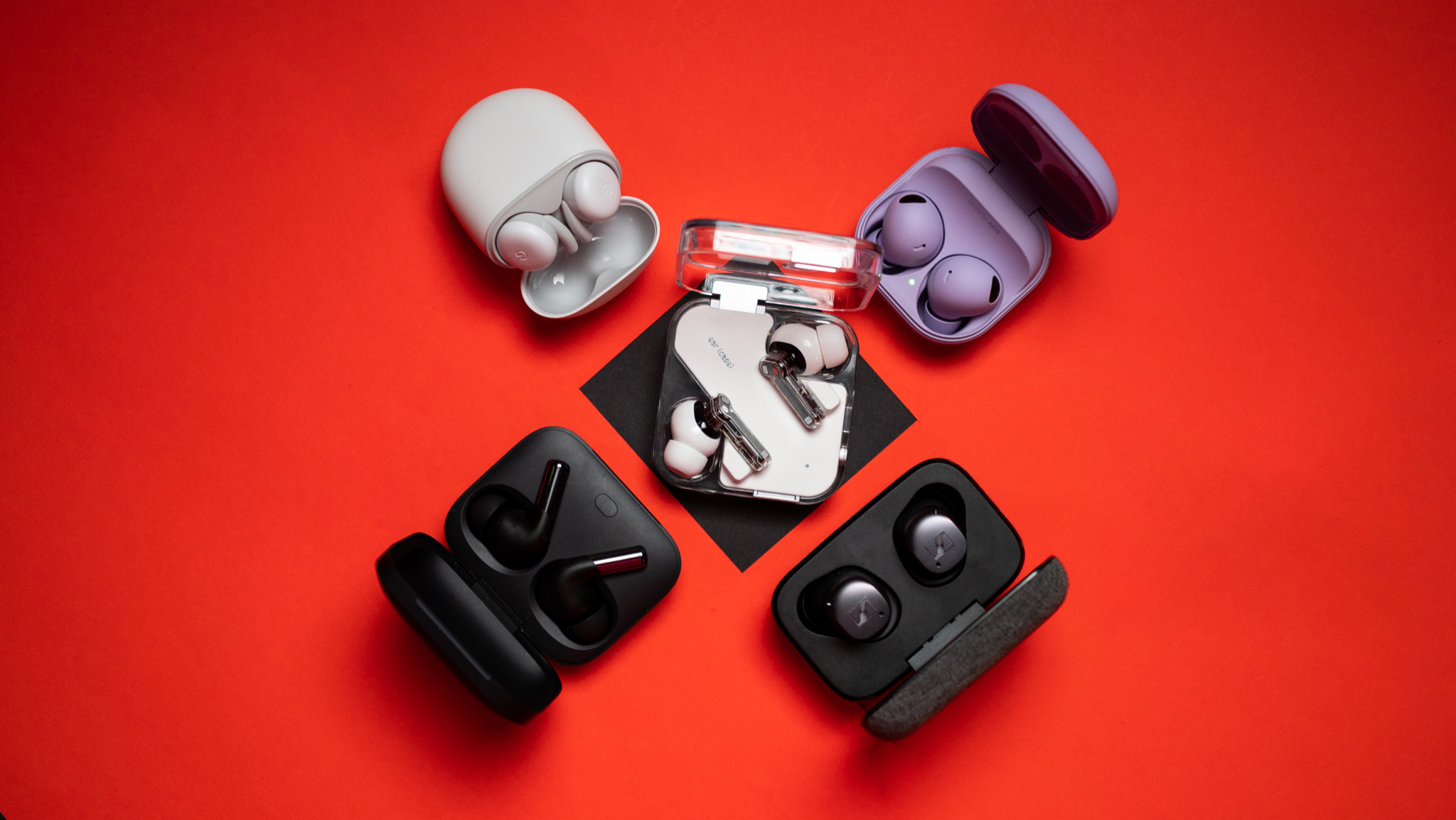
Coming to the sound itself, the Ear (2) retains the 11.6mm dynamic driver, but the tuning is much better with this generation. The earbuds deliver an enthusiastic bass that's full of vigor and energy, with clear mids and detailed highs. There is no sibilance to the sound at higher frequencies, and there's good instrument separation, allowing the Ear (2) to work well across a variety of genres.
There's a vibrancy to the sound because of that exaggerated bass, and it makes the Ear (2) highly engaging. They're particularly well-suited to bass-heavy music, but the Ear (2) fared relatively well while listening to classic rock and metal albums. There is some customizability to the sound, but you don't get a ten-band EQ; instead, you can choose between balanced, bass, and treble, or select a voice mode that boosts vocals. You get the ability to change the bass, mids, and treble should you wish to do so as well.
The tuning is eerily similar to that of the OnePlus Buds Pro 2, and using both earbuds side by side, it's evident that they offer a similar sound signature with a clear focus on the low-end frequencies.
Nothing Ear (2): Battery life
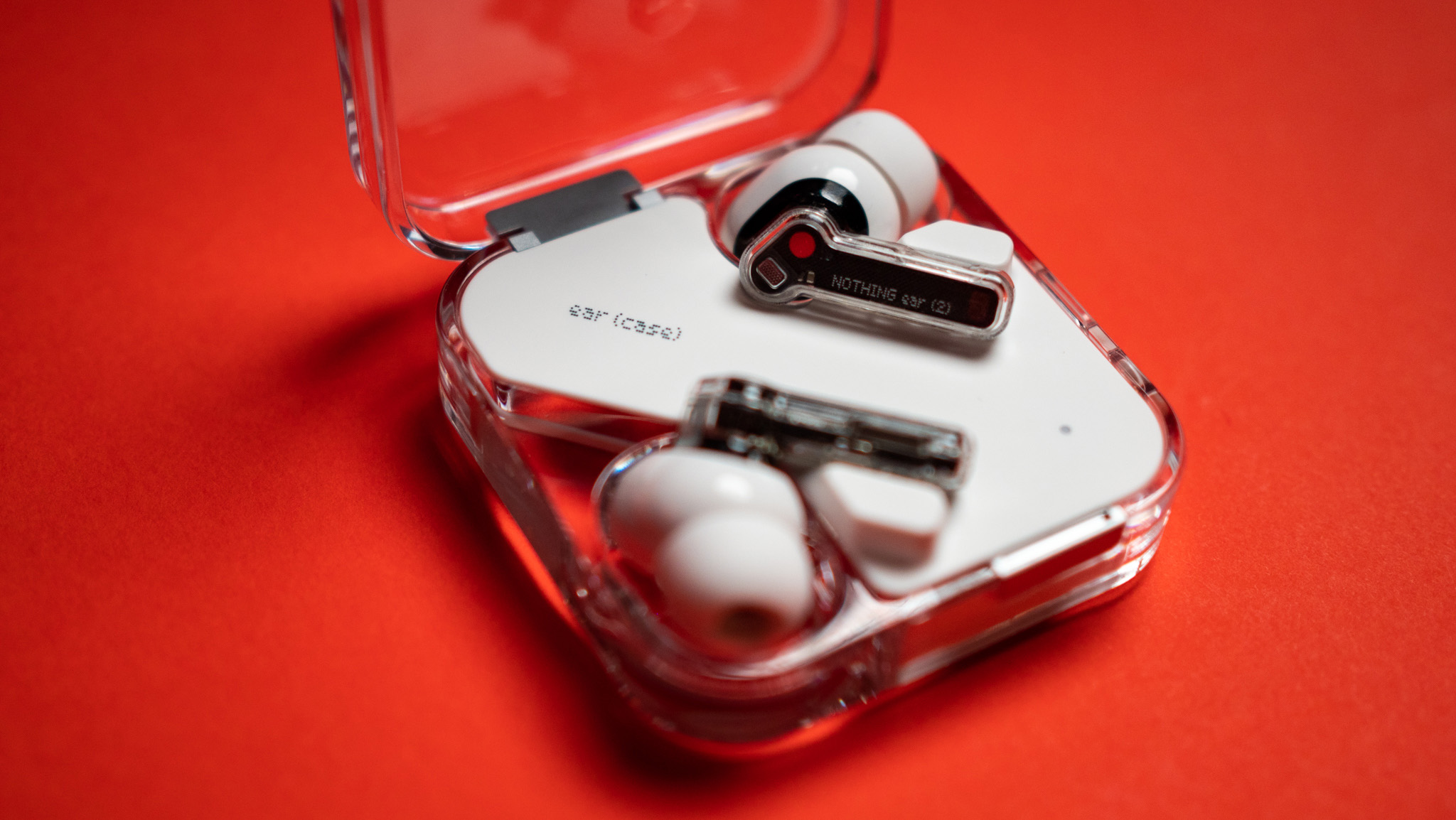
The one area where things have stayed the same is battery life; the Ear (2) offers just over four hours of music playback from a full charge, with the case offering eight additional charges, leading to 36 hours in total. This is less than the standard in this category, and while it's good to see that Nothing is able to deliver the same figures with a smaller case, I would have liked to see the Ear (2) lasting at least five hours between charges.
In my use, I got a smidgen over four hours of music playback before having to charge the buds, and while that figure goes up to over six hours if you turn off noise isolation, it isn't worth the hassle. There's no getting around the fact that the Ear (2) are strictly average in this area, so if you need wireless earbuds with great battery life, you'll need to look elsewhere.
Fast charging is intact, with a 10-minute charge offering 50 minutes of music playback. You'll find wireless charging for the case as well, so you can plonk the case on the back of the phone (1), Galaxy S23 Ultra, or any phone that has reverse wireless charging and charge it that way.
Nothing Ear (2): The competition
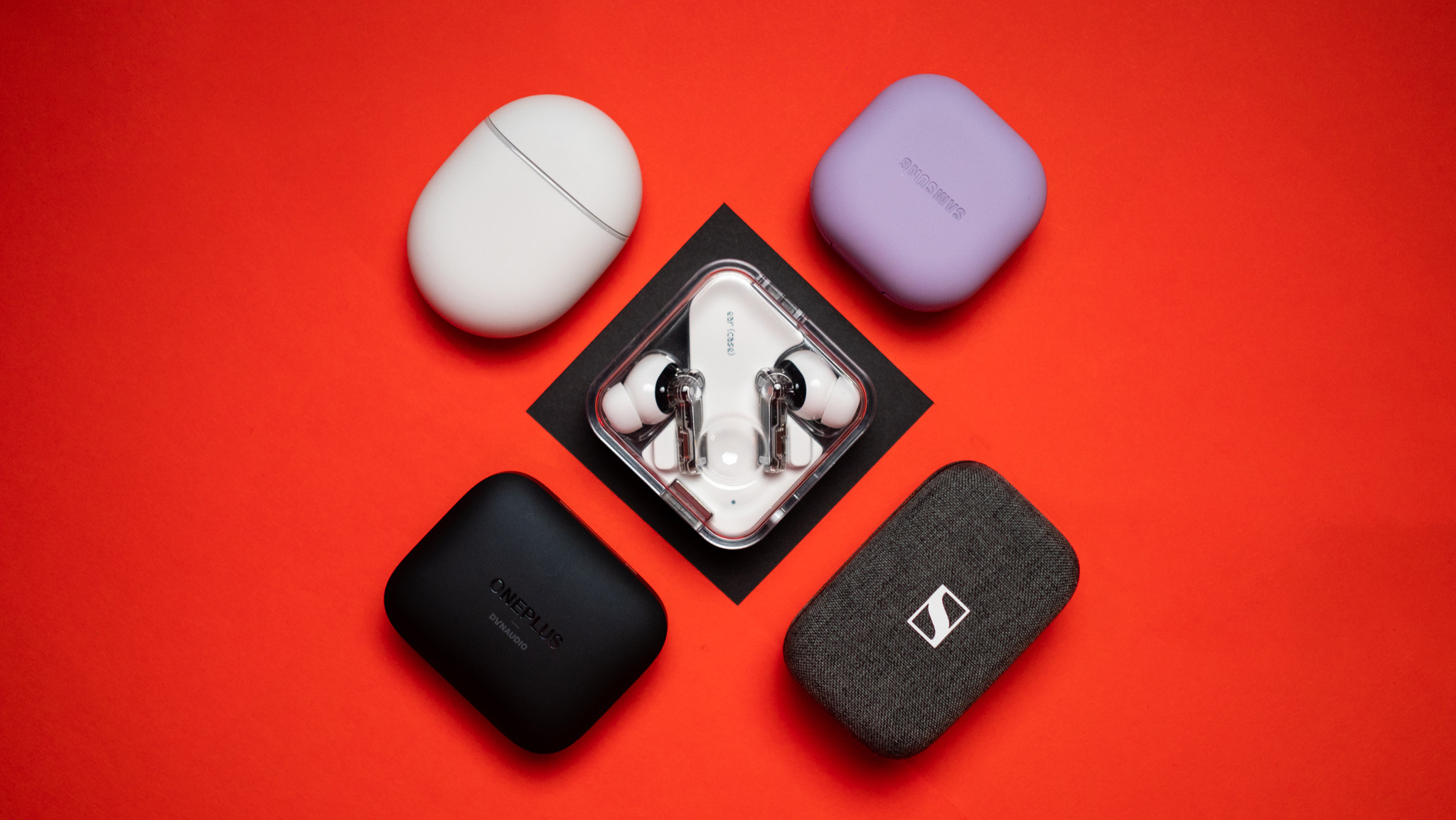
The OnePlus Buds Pro 2 are the main rival to the Ear (2), and OnePlus delivers a similar bass-focused sound along with all the extras you want. The Buds Pro 2 have the same set of codecs, offer IP55 dust and water resistance, and last just under six hours on a full charge. They fit just as well and are comfortable in daily use, and the design is elegant.
They're available for ₹9,999 ($120) in India — just like the Ear (2) — and for my money, I'd get the Buds Pro 2 just for the better battery life. That said, they're not a good value in North America — where they retail for $179 — so you should consider one of the other alternatives.
If you're after the best sound quality, my pick would be the Sennheiser Momentum True Wireless 3. They're now down to $169, and for the money, you won't find other wireless earbuds that sound anywhere as good. They don't miss out on any of the extras either, and while the fit isn't as comfortable as the Ear (2), the balanced sound quality more than makes up for it.
Of course, there's the Pixel Buds Pro to consider. Google nailed the formula this time around, offering earbuds that sound great and include all the features you care about. The Pixel Buds Pro last longer than the Ear (2) as well, and they're on sale for $149 — same as the Ear (2).
Nothing Ear (2): Should you buy it?

You should buy this if:
- You want earbuds with a distinctive design
- You need a comfortable fit that's great for workouts
- You want good sound quality with exaggerated low-end frequencies
You shouldn't buy this if:
- You need earbuds with the best battery life
- You want the AptX codec suite
Nothing didn't change the fundamentals too much with the Ear (2); the earbuds use the same tooling as their predecessor, allowing the brand to save manufacturing costs. That said, they have the same distinct design, and the changes to the case make it a little more manageable.
The sound quality is much better, and the earbuds feel like a polished product this time around. That said, the same shortcomings have carried over in this generation, and the Ear (2) don't last anywhere as long as the best wireless earbuds — that's bound to be a deal-breaker for a lot of users.
At the end of the day, if you like what Nothing is doing on the design front and want earbuds that look distinctive and sound great, the Ear (2) is a good recommendation. But if you want a more cohesive product with better battery life and a little more finesse, there are plenty of standout alternatives.







